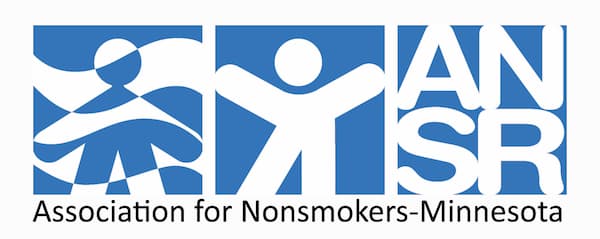TOBACCO 21
The tobacco industry heavily targets young adults ages 18-21 in order to recruit new tobacco users and guarantee profits. About 95 percent of current adult smokers started before they were 18. [i]
A 2015 report from the National Academy of Medicine (formerly the Institute of Medicine) found that increasing the legal age to buy tobacco to 21 would decrease smoking initiation among 15-17 year olds by 25 percent. [ii] A Minnesota-specific study looked at the impact of raising the tobacco age and found that 25 percent fewer 15-year-olds would start smoking by the time they turn 18. This translates into 30,000 young people not becoming smokers over the next 15 years. [iii] If youth don’t smoke by the time they are 21, they likely never will.
Why This Matters
Nicotine is addictive and particularly harmful to the developing adolescent brain. Evidence suggests that nicotine interferes with brain maturation and can have a long term effect on cognitive development and mental health. [iv] The long-term effects of nicotine on the adolescent brain is a significant public health concern. [v], [vi]
Any step to prevent youth from becoming addicted to tobacco products is a step in the right direction, especially in the face of the youth nicotine epidemic.
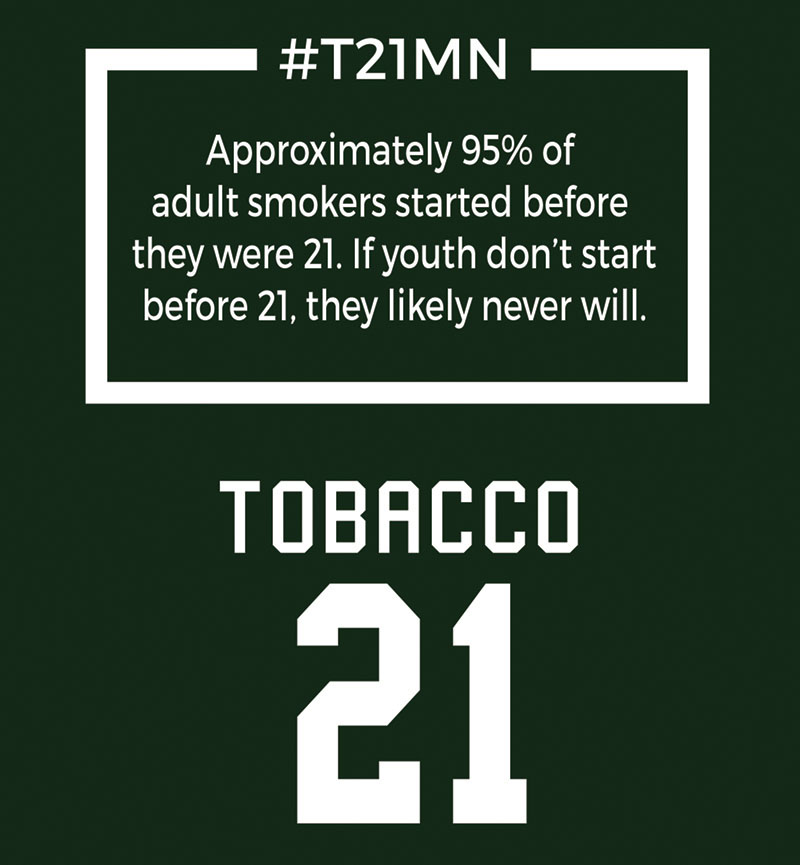
Federal, State and Local Efforts
As of December 2019, 19 states – Arkansas, California, Connecticut, Delaware, Hawaii, Illinois, Maine, Maryland, Massachusetts, New Jersey, New York, Ohio, Oregon, Pennsylvania, Texas, Utah, Vermont, Virginia and Washington – had raised the tobacco age to 21, along with Washington, DC and more than 540 localities.
On Dec. 20, 2019, President Trump signed Tobacco 21 into federal law. Raising the national tobacco sales age to 21 is a victory for youth and health, but state and local action is still needed to maximize health benefits. ANSR continues to work with state and local partners to implement this policy and pursue a comprehensive approach to tobacco prevention and cessation here in Minnesota.
As of May 2020, 75 Minnesota cities and counties raised the tobacco sales age to 21. This set the table for the Minnesota State Legislature to pass a Tobacco 21 law in May that ensured all youth in the state are protected.
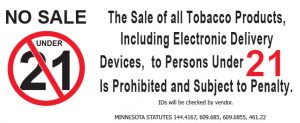
ANSR provided signage for vendors across the state. If you need more signage, please us at signorders@ansrmn.org.
Resources for Law Enforcement and Schools
Alternatives to Penalties for Youth
Penalties on underage possession, use, and purchase of tobacco have not been proven to reduce tobacco use. The Centers for Disease Control and Prevention (CDC) recommends education, counseling, and support to reduce youth use. Research shows that punitive measures against young people can results in unintentional consequences and increase the likelihood of youth initiation. The community programs for youth listed below are available as alternatives to punitive measures.
| Program | More Information |
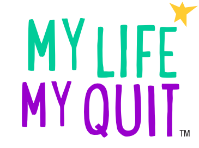 | Youth ages 13-18 can access free tobacco treatment services through My Life, My Quit (MLMQ) supported by the MN Department of Health. Features include: – FREE continuing education offered for school staff, on tobacco treatment for youth at “CoursesThatClickMN.com”; – MLMQ can be used as an alternative to suspension program; and – Posters and other promotional materials can be accessed here |
 | This is Quitting is a free and anonymous text messaging program from Truth Initiative designed to help young people quit vaping. Features include: – This is Quitting is tailored based on age (within 13 to 24 years old) and product usage to give teens and young adults appropriate recommendations about quitting; and – Free promotional materials are available to promote This is Quitting within schools and local communities can be access here |
 | The Escape the Vape Video Challenge is a PSA video contest where Minnesota 6th-12th graders can use their voice to raise awareness about the dangers of vaping and expose the shadowy commercial tobacco marketing tactics behind it. Students create and upload their 30-second, vape-bashing masterpiece, and have the chance to win $500 for them and $500 for their school or organization, along with other great prizes. #mnjointheescape |
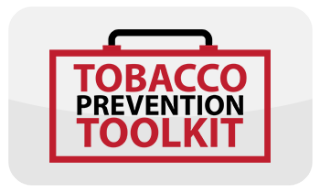 | The Stanford Medicine Tobacco Prevention Toolkit is a free theory-based and evidence-informed curriculums and resources created by educators, parents, youth and researchers aimed at preventing middle and high school students’ use of tobacco and nicotine. The toolkit includes: – You and Me, Together Vape-Free Curriculum – Healthy Futures Curriculum: Alternative-to-Suspension Curriculum – Smokeless Tobacco 101 – Hookah 101 – Factsheets and posters |
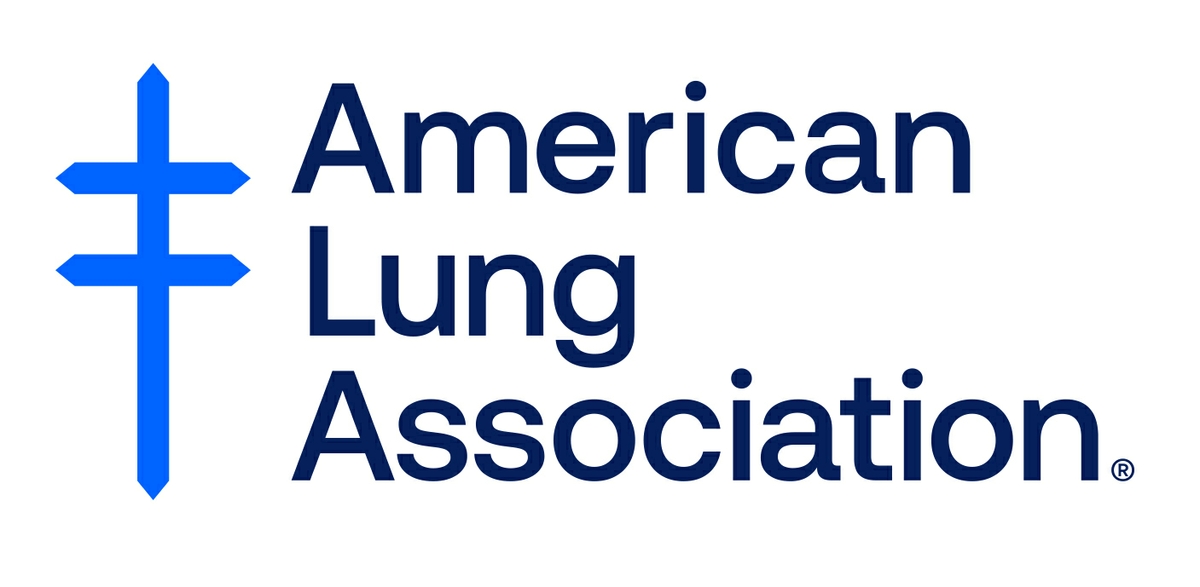 | INDEPTH is a FREE interactive program that teaches students about nicotine dependence, establishing healthy alternatives and how to kick the unhealthy addiction that got them in trouble in the first place. How it works: – Schools connect with the American Lung Association – Facilitators completed an online INDEPTH training – Facilitators prepare and implement the INDEPTH program |
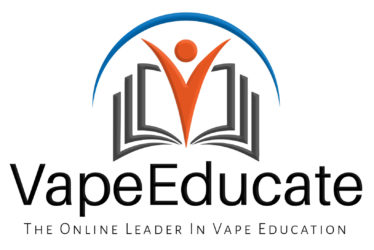 | Vape, Educate is an online course originally designed to be completed by middle and high school students. It can be purchased and used as an educational program for teachers, parents, and other community members. The program is intended to be used as a tool that provides supplemental material to educate students about vaping. |
 | As part of the Don’t Blow It: Anti-vaping Campaign, Essentia Health developed a toolkit that can be used by teachers and community groups to educate students and the general public about the dangers of vaping. |
Citations:
i. U.S. Department of Health and Human Services. Preventing Tobacco Use Among Youth and Young Adults: A Report of the Surgeon General. U.S. Department of Health and Human Services, Centers for Disease Control and Prevention, National 2 Center for Chronic Disease Prevention and Health Promotion, Office on Smoking and Health. 2012.
ii. National Academy of Medicine. Public Health Implications of Raising the Minimum Age of Legal Access to Tobacco Products. National Academy Press. 2015.
iii. Boyle, R., Kingsbury, J. & Parks, M. Raising the Minimum Legal Sales Age for Tobacco to 21. Minnesota Medicine. 2017.
iv. U.S. Department of Health and Human Services. The Health Consequences of Smoking: 50 Years of Progress. A Report of the Surgeon General. U.S. Department of Health and Human Services, Centers for Disease Control and Prevention, National Center for Chronic Disease Prevention and Health Promotion, Office on Smoking and Health. 2014.
v. Goriounova, N., Mansvelder, H. Nicotine exposure during adolescence alters the rules for prefrontal cortical synaptic plasticity during adulthood. Frontiers in synaptic neuroscience. 2012.
vi. Nelson, D. et al. Long-term trends in adolescent and young adult smoking in the United States: metapatterns and implications. Am J Public Health. 2008.
